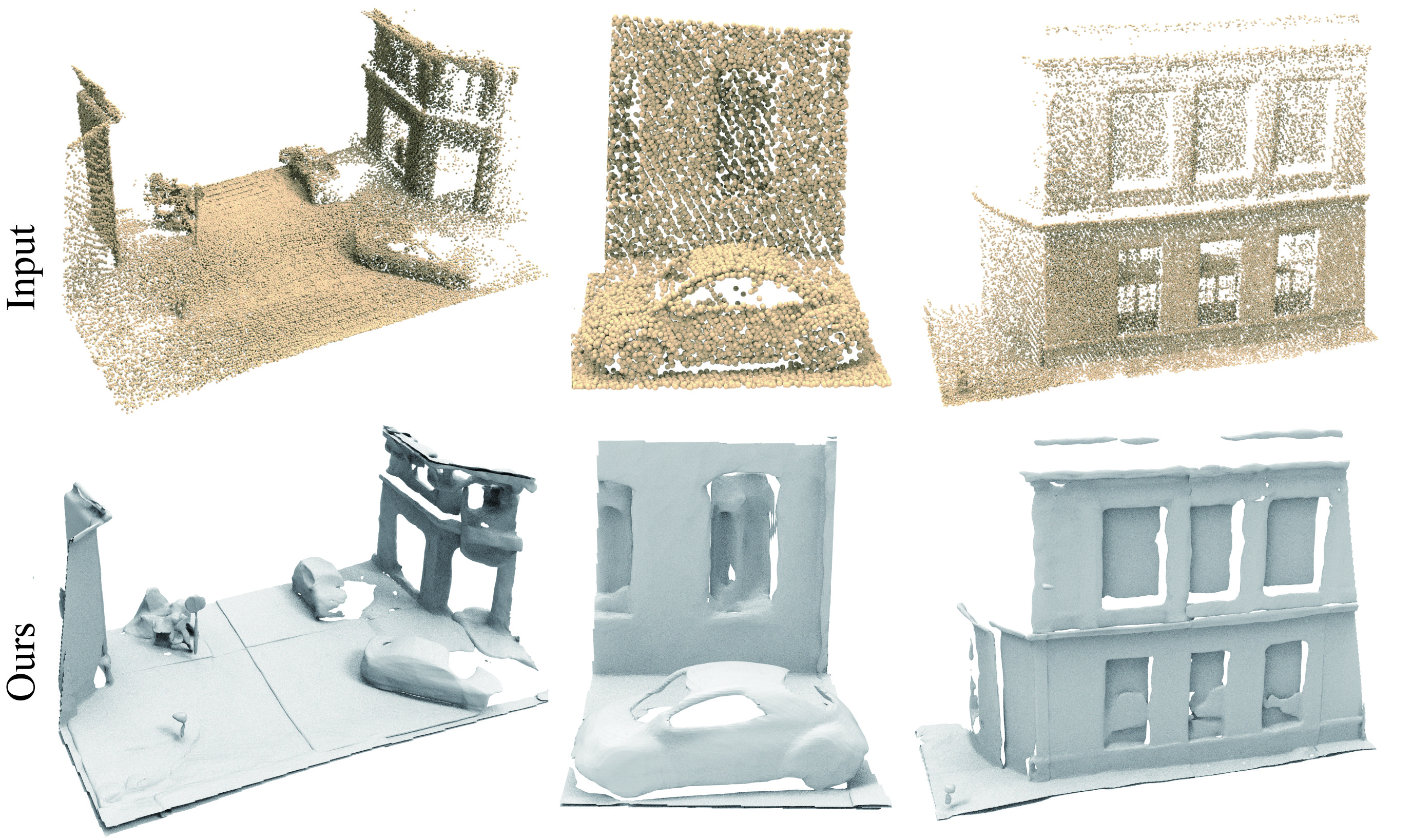This repository contains the code to reproduce the results from the paper. Reconstructing Surfaces for Sparse Point Clouds with On-Surface Priors.
You can find detailed usage instructions for training your own models and using pretrained models below.
If you find our code or paper useful, please consider citing
@inproceedings{On-SurfacePriors,
title = {Reconstructing Surfaces for Sparse Point Clouds with On-Surface Priors},
author = {Baorui, Ma and Yu-Shen, Liu and Zhizhong, Han},
booktitle = {Proceedings of the IEEE/CVF Conference on Computer Vision and Pattern Recognition (CVPR)},
year = {2022}
}
First you have to make sure that you have all dependencies in place. The simplest way to do so, is to use anaconda.
You can create an anaconda environment called tf using
conda env create -f tf.yaml
conda activate tf
You can train a new network from pre-train On-Surface Prior Networks, run
python onSurPrior.py --data_dir ./data/ --out_dir ./train_net/ --CUDA 0 --INPUT_NUM 500 --epoch 30000 --input_ply_file input.ply --train
You should put the point cloud file(--input_ply_file, only ply format) into the '--out_dir' folder, '--INPUT_NUM' is the number of points in the '--input_ply_file'.
You can extract the mesh model from the trained network, run
python onSurPrior.py --data_dir ./data/ --out_dir ./train_net/ --CUDA 0 --INPUT_NUM 500 --epoch 30000 --input_ply_file input.ply --test


